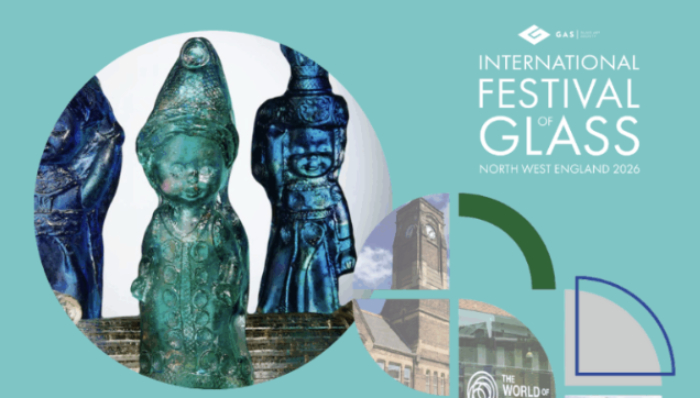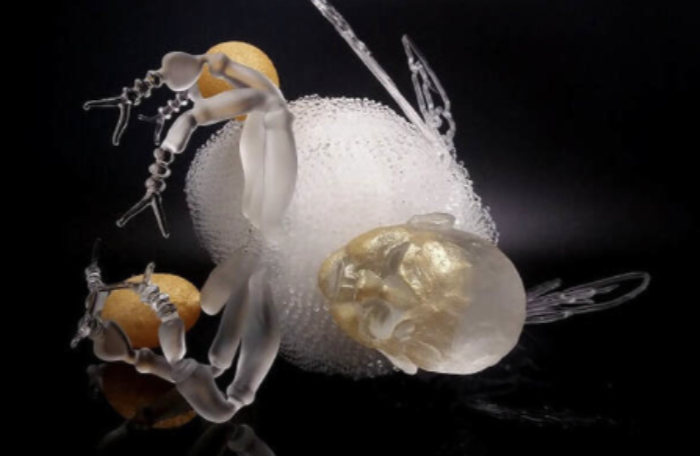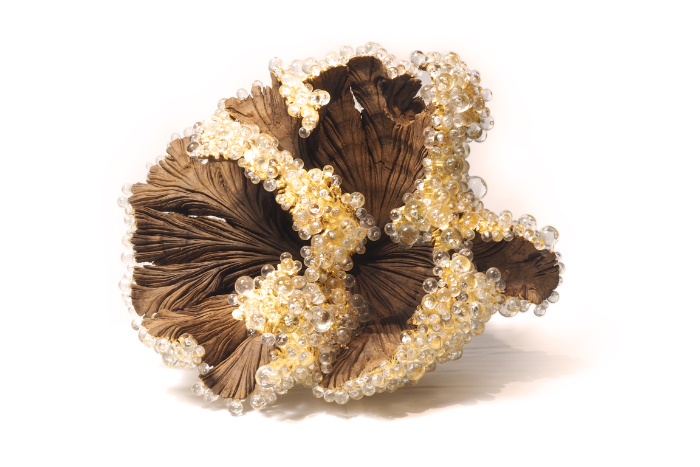
Material encounters: the Ireland Glass Biennale exhibition 2023
Dr Anna Moran delves into the work and inspirations of the artists in this show, on until 20 August 2023 at Dublin Castle. Dr Moran lectures on the history of craft and design at the National College of Art and Design, Dublin.
Since its inception in 2017, the Ireland Glass Biennale (IGB) has developed into a key event in the international glass calendar. Following the traditional biennale format, IGB 2023 has been curated following an open call during which 51artists were selected from over 200 submissions by an international jury. Each bringing expertise from their respective worlds of commercial galleries, museums, glass education and practice, the IGB 2023 jury comprised Katya Heller, Director at Heller Gallery, New York; Zhang Lin, founder and president of the Shanghai Museum of Glass; Kim Mawhinney, Senior Curator of Art at National Museums Northern Ireland, and Irish artist and educator, Karen Donnellan.
Bringing together makers from Europe, the Middle East, Asia, and North and South America – including both established and emerging talent – the incredible range of creative output stemming from artists working with glass can be sensed at this large show. Film- and performance-based work and wall-hung neon pieces are presented alongside large scale installations and smaller works made using glass as well as found objects and mixed media. Led by Dr Caroline Madden, lecturer in glass at the National College of Art and Design, Dublin, IGB is part of a much larger Creative Europe funded project, ‘Imagining Sustainable Glass Network Europe’ (ISGNE), which has worked towards creating connections between glass schools and studios across Europe, funding training for glassmakers, highlighting glass making skill as part of our intangible heritage and presenting biennales such as this one.
Underpinning much of the work on display is purposeful and meaningful engagement with the materiality of glass. Its transparency, ductility and fragility, combined with its seemingly contradictory qualities of strength, solidity and hardness, form a context for experimentation and a rich seam of exploration for many of the makers represented. The Northern Ireland-based artist, Helen Hancock, is one such maker. She explores what happens when glass is infused with breastmilk, umbilical cords, milk teeth or ashes, telling us that milk teeth create an extraordinary bloom of gold colour when saturated into glass, while breast-milk creates a web-like pattern of white threads, which is ‘unique each time’ (IGB Catalogue, 2023, p58). Drawing on her other role as a breastfeeding counsellor, her glass practice is focused on women’s experiences, and their stories of trauma in particular. Using these intensely resonant glass materials, Hancock makes very personal pieces, informed by the private, healing dialogue between her and the women she has worked with.
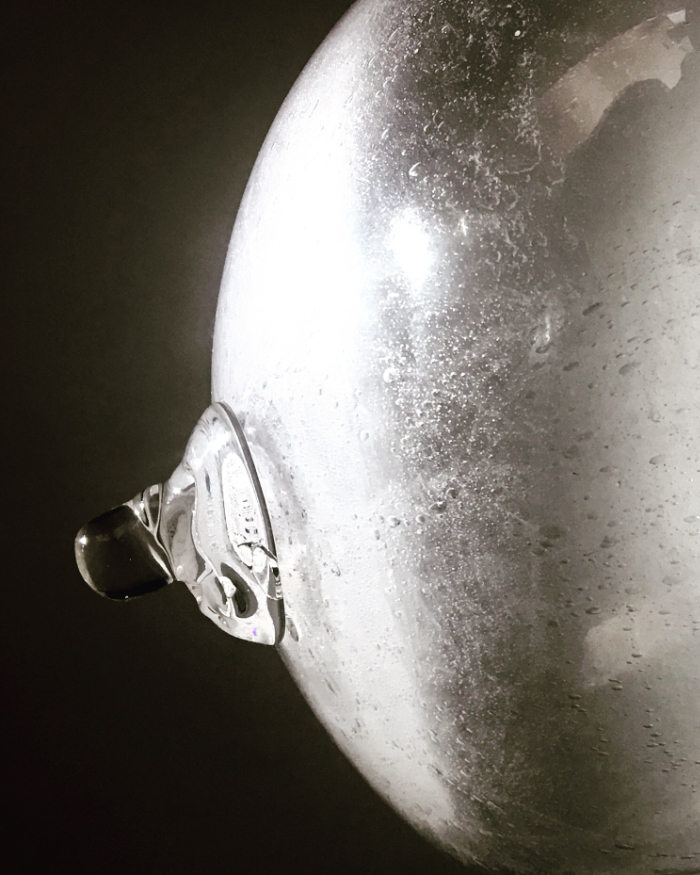
For Irish artist Laura Quinn, it is the interface between people and glass that has provided a guiding focus. Informed by Michael Polanyi’s writings on tacit knowledge, Quinn urges observers to explore the ‘silent knowledge of the material’ through sight and touch, provoking and welcoming human engagement (IGB Catalogue, 2023, p92). The pieces Haptic Bellows I & II each feature over 150 individually lampworked leaf-like and spiked forms embedded in a silicone membrane, which encourage the viewer to reach out and touch, all the while inviting reflection on the nature of glass and its ability to withstand such contact.
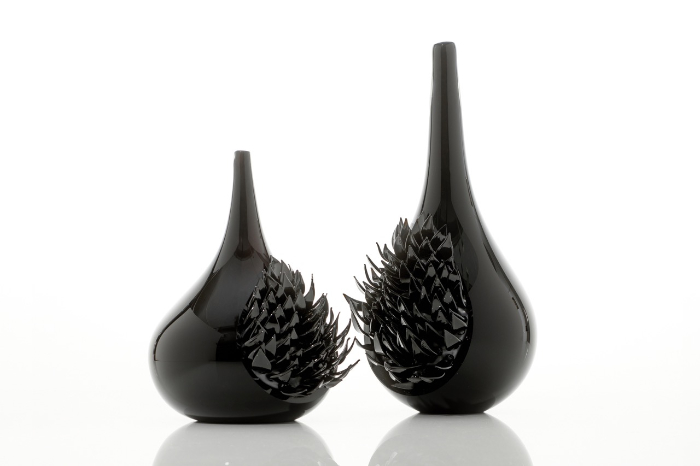
A very different approach to the materiality of glass is seen in the work of German-born Seattle-based Anna Mlasowsky. With a keen awareness of the ways in which glass exists across a spectrum of physical states – solid, fluid, transparent and ‘unyieldingly hard yet precariously fragile’ – Mlasoswky creates glass objects which are used or ‘activated’ in her video- and performance-based work (IGB Catalogue, 2023, p82). In performances such as 4 Feet Apart and On * Venus, the material properties of glass are used thought provokingly as a mediator through which to navigate ideas around womanhood, otherness, queerness, unbelonging and disobedience. Video of 4 Feet Apart available via this link.
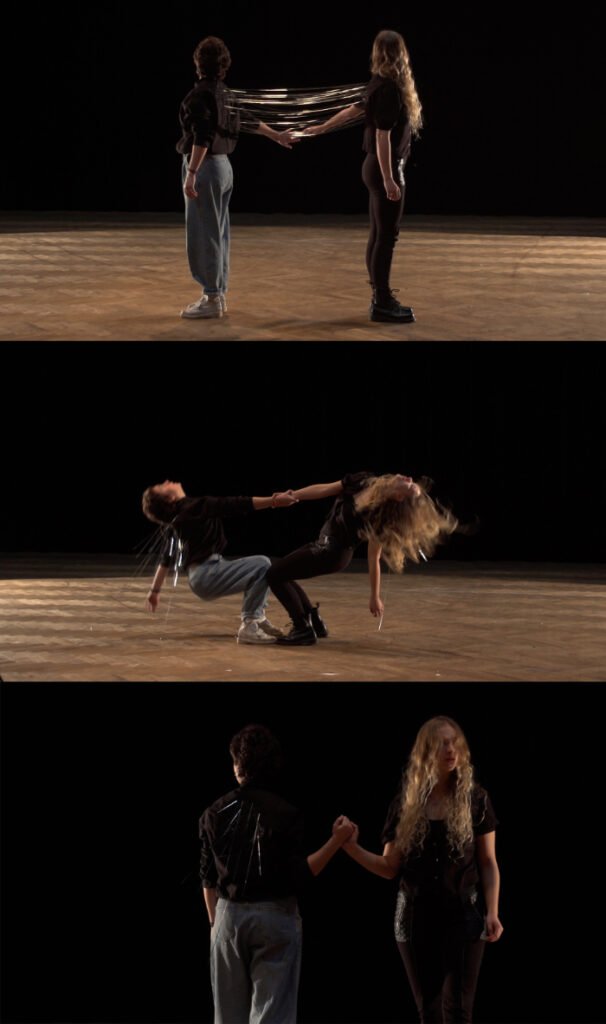
The intrinsic characteristics of glass, particularly its fragility and transparency, are also used creatively in the work of Dutch-based Krista Israel. Using glass lampworking techniques, in combination with other materials, such as porcelain and found objects, Israel’s work conveys ideas around wellbeing and seeks to further probe, in her own words, ‘the existential experience of contemporary society’ (IGB Catalogue, 2023, p66). An ironic humour pervades her piece, Without Title II, which both draws in and intrigues, challenging the viewer to contemplate the pose and gilded palms of the toy-like figure on its knees.

A deep and intuitive connection between the maker and their material comes to the fore in many of the works on display, each resonant of the patient, skilled work required in their making. In a world which is increasingly uncertain and precarious, London-based artist Sarah Wiberley finds a ‘fleeting sense of control’ in the execution of time-consuming, traditional techniques (IGB Catalogue, 2023, p120). Underscored by an innate understanding of colour, Wiberley’s precise patterning evokes a welcome sense of calmness and order.
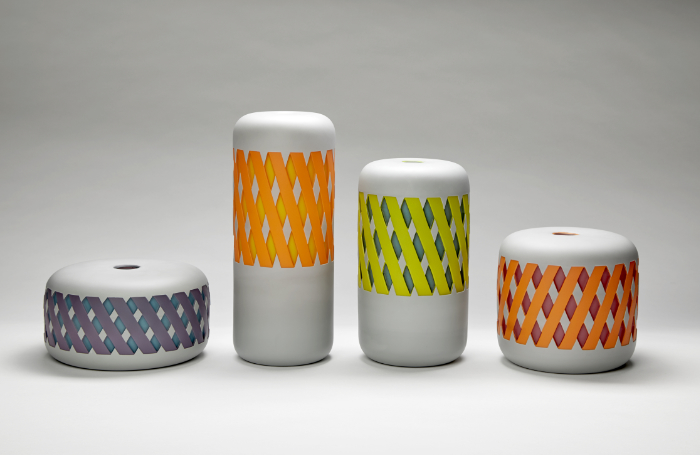
For French artist Valérie Rey, the painstaking processes involved in adorning rescued pieces of nature that she feels are forgotten and undervalued – such as fallen trees, fungi, walnut shells – are therapeutically meditative. Rey describes the application of gold leaf as ‘sensual’, while there is a calming, contemplative quality to the repetition involved in forming and shaping hundreds of glass beads ‘like tiny beings, similar but in reality all different and once assembled, form a colony, a people’ (IGB Catalogue, 2023). See main feature image.

Precariousness – whether in relation to the environment or a broader sense of social uncertainty – exists as an undercurrent in many of the works on display. For Carrie Fertig, an artist based in Scotland, the climate crisis looms in the form of a large plumb bob comprised of thousands of hanging glass icicles. Her video performance, entitled Plummet, shows the unwieldy plumb bob, symbolic of melting ice, tethered awkwardly to the artist. When the artist moves, this causes the plumb bob to swing dangerously, the icicles clashing into each other, ringing a loud roar denoting an ending, ‘as inescapable as the consequences of our behaviour’ (IGB Catalogue, 2023, p52). Importantly, each of the icicles used in Plummet has been recycled, having been used in previous performances by Fertig.
Reusing glass is a practice also seen in the work of other artists exhibiting at IGB 2023, such as Czech artist Michaela Spruzinova, who recycles various pieces of glass in the creation of her work, and American-Austrian artist Rebecca Tanda, who reworks car window glass into organic forms.
Taking all of the work shown at this large group show into consideration, a commonality that arises is a rich and meaningful engagement with the materiality of glass. Closer examination rewards the observer, whether it is Hancock’s breast-milk infused glass or the tender coat of lampworked glass that envelops Israel’s figurative piece, the mesmerising beaded surface of Rey’s fungi or the dense forest of leaf-like forms on Quinn’s sculptural forms that call out to be touched. It is there you will sense the incredible process of correspondence – the back and forth between the maker and their material – creating an intuitive, innate connection that is palpable in each and every piece in this important exhibition.
The Irish Glass Biennale 2023 exhibition is open to the public from 28 April until 20 August 2023 at the Coach House Gallery, Dublin Castle, Ireland. Free Admission. Find out more via the website.
Dr Anna Moran
Main feature image: Valérie Rey’s ‘Respect’ is made from glass and wood. Photo by the artist.
